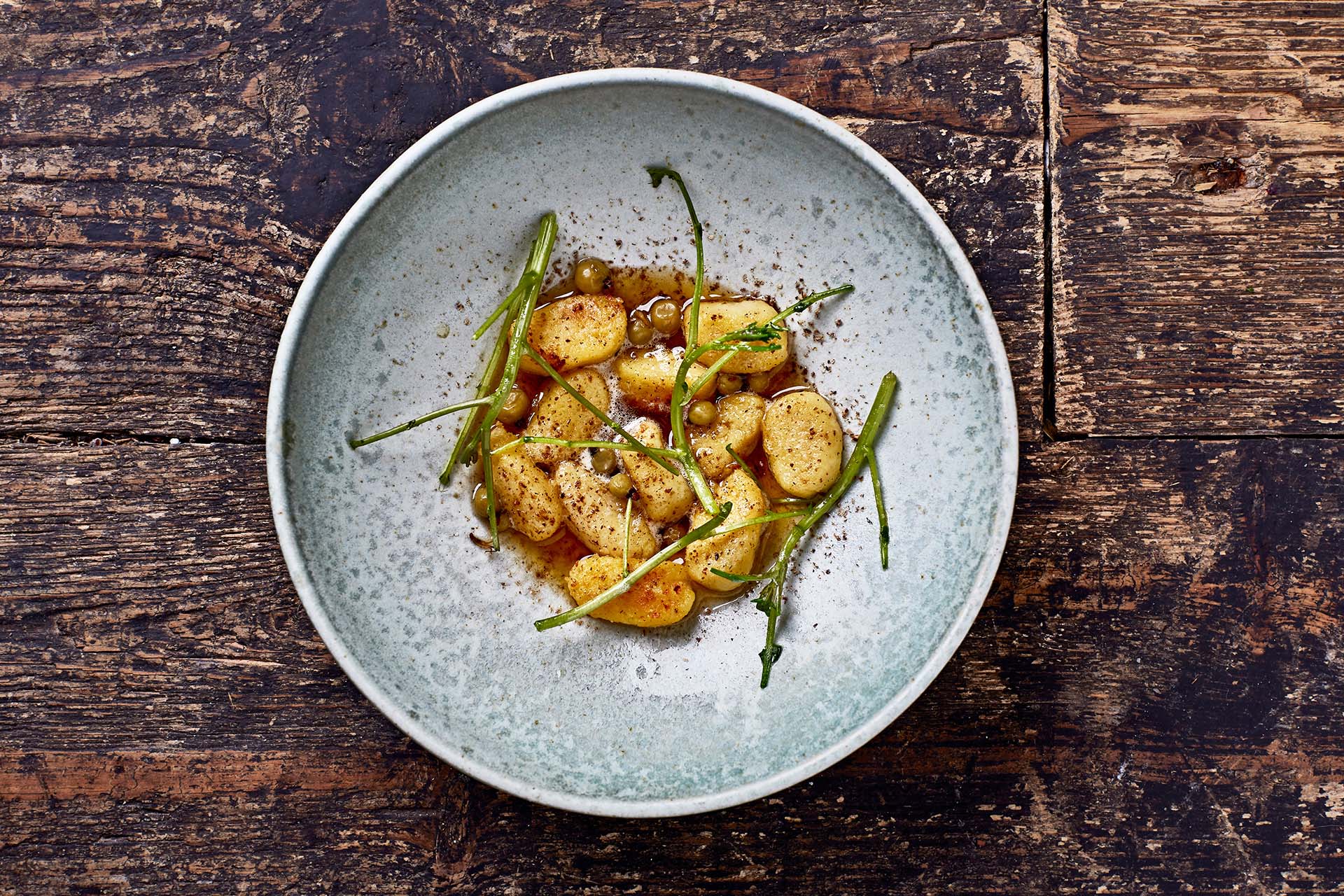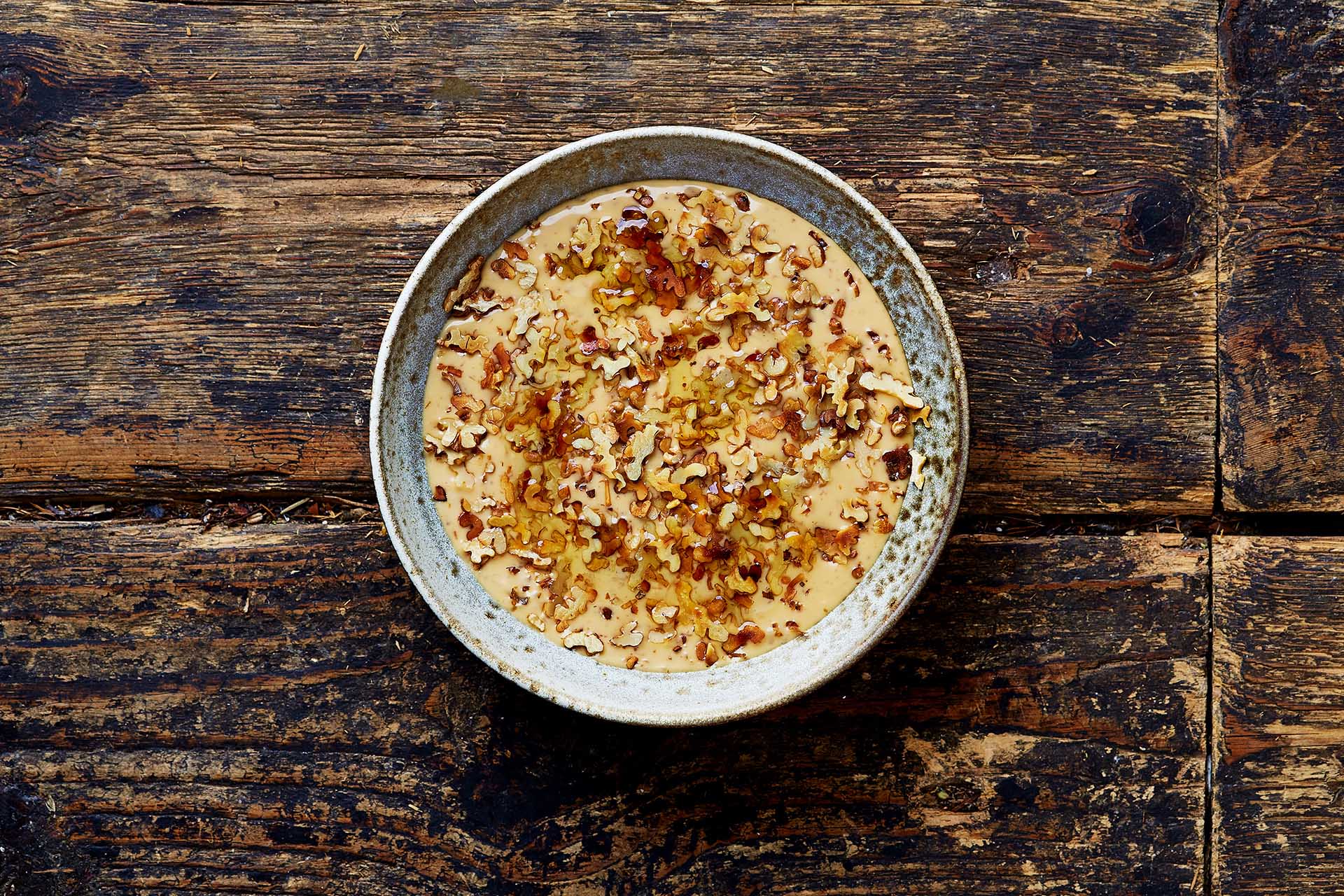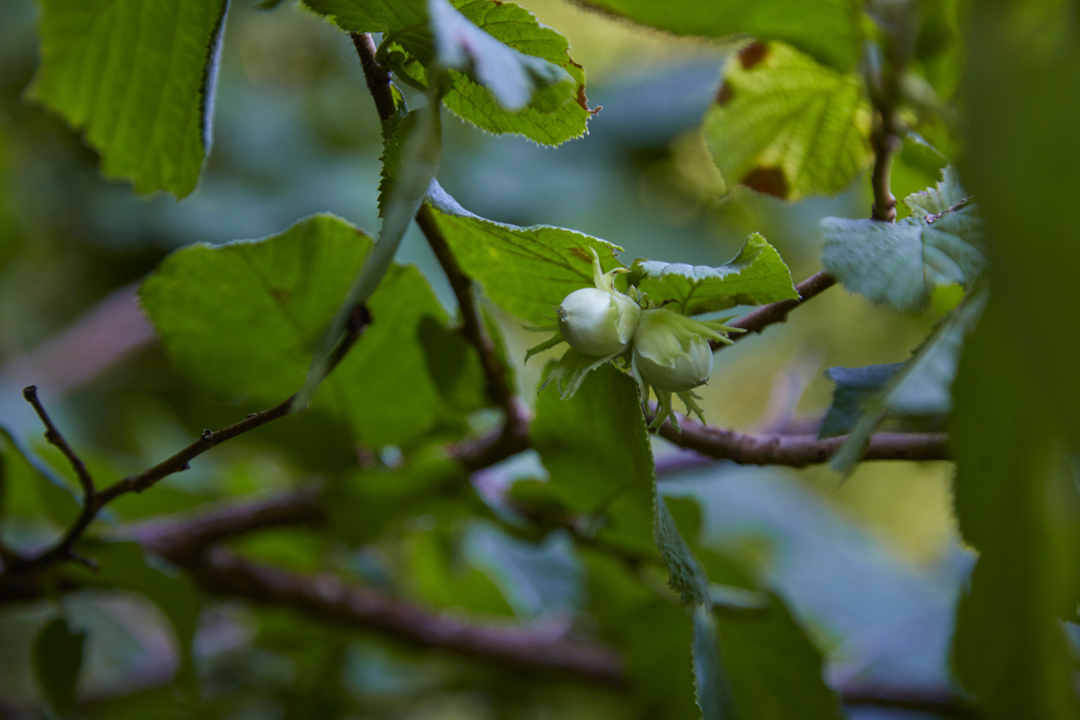
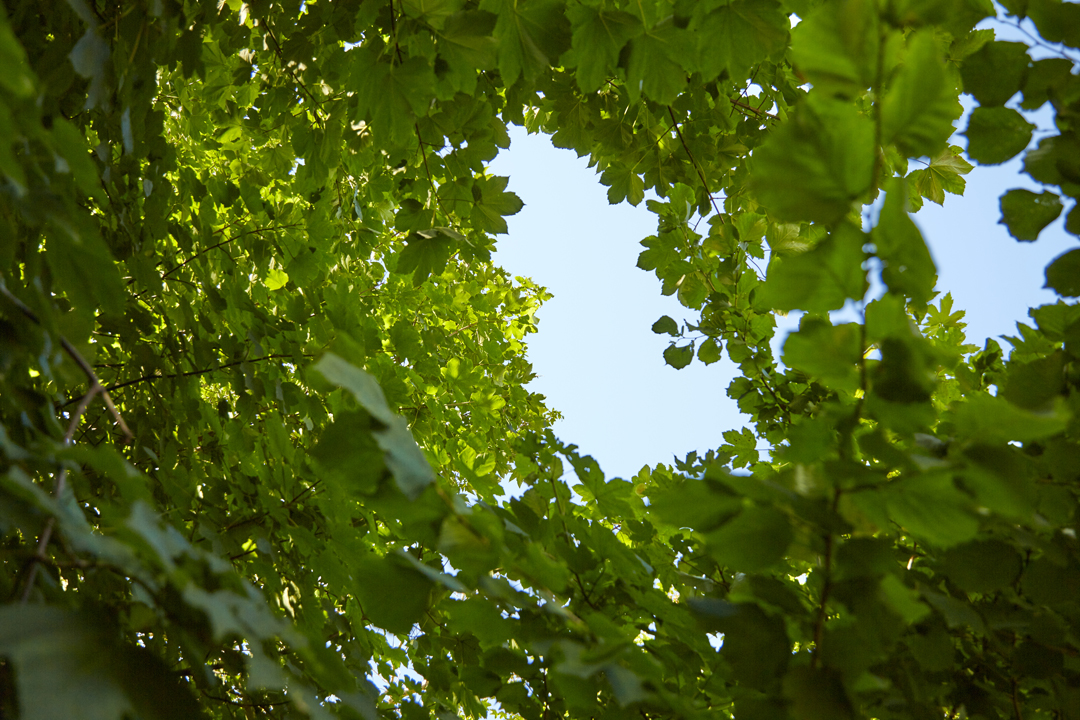
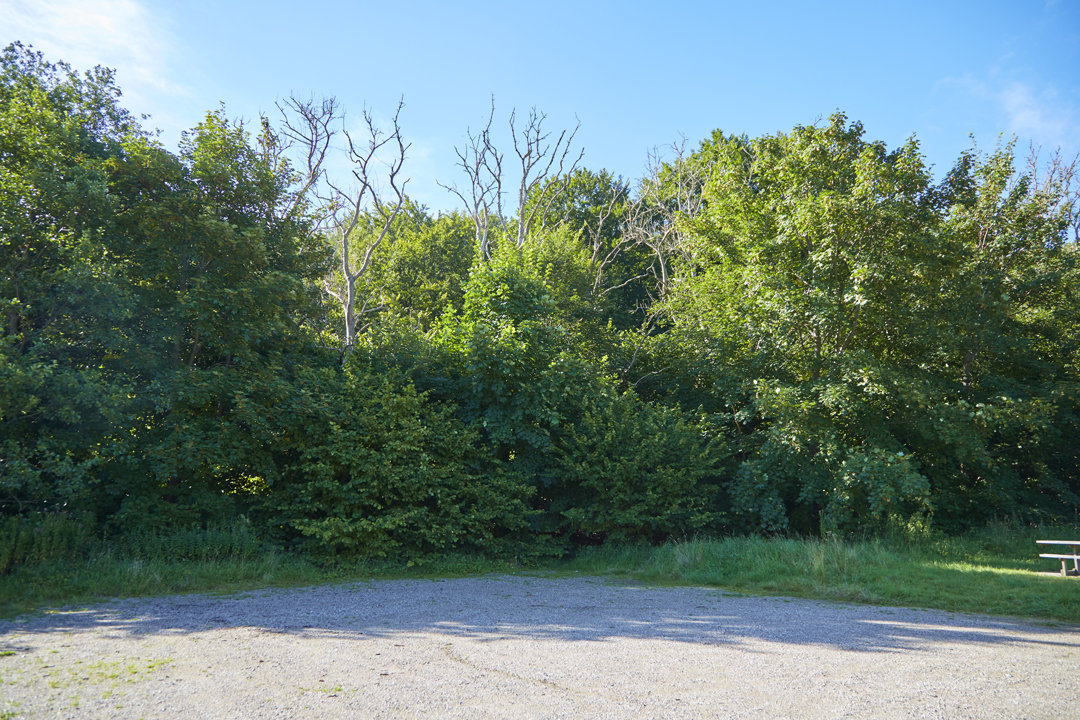
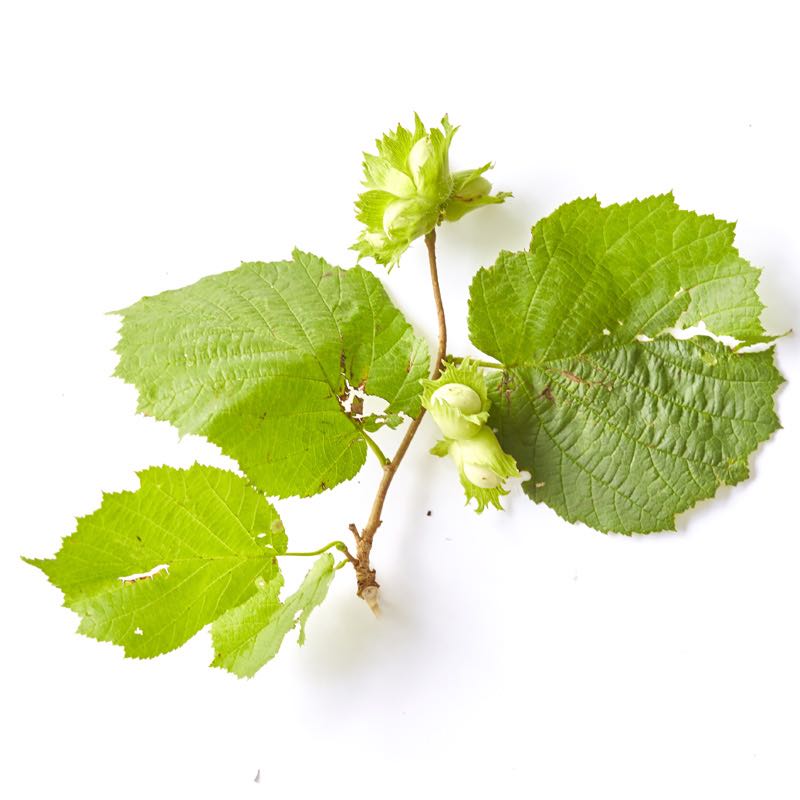
Hazel
If you've only ever tasted hazelnuts bought in a store, get ready for a real treat when you try a fresh hazelnut right off the tree. Denmark's national nut is naturally rich and succulent.
-
Where to Find It
Hazel is a tenacious bush that can be found all over Denmark, but it prefers soil rich with nutrients. It grows in deciduous forests, thickets, and hedges, and is quite common in and around towns. If you find a large oak tree, you just might be lucky enough to find a hazelnut bush that has taken root underneath, where the light trickles through the crown of the tree. Beech forests, on the other hand, aren't a good place to forage for hazel, as the trees block out too much light. It's not uncommon to see hazel growing in large, interconnected copses.
Deciduous forests, towns, hedges.
-
When to Find It
Hazel blooms in early spring with long, hanging inflorescences that are called "catkins," and look like tiny caterpillars. In May the leaves bud and in fall you can pick the nuts—unripe ones are available as early as the end of August.
Unripe nuts: September. -
How to Spot It
Normally, hazelnut bushes are tall shrubs with multiple greyish-brown stalks that bristle in the air, but in the right conditions, the shrub can develop into an actual tree with a trunk up to 25 cm in diameter. The leaves are heart-shaped and serrated on the edges, while the stems are somewhat hairy. The flowers are yellow to red. The hard, brown nuts grow in clusters and are approximately one and a half cm in diameter. Once cracked, the nut reveals a brown layer that coats the round, white nut.
-
How to Pick It
It's best to pick the nuts directly from the tree, as they quickly become infested with worms once they've hit the ground. Keep a close eye on them though, because squirrels also lie in wait for the nuts to ripen. You might lay down a tarp under the hazelnut bush and give it a good shake to knock off the ripe nuts.
Ripe nuts: October.
Risk of misidentifying the plant
There is no risk of mistaking the plant for another dangerous or undesirable plant.


